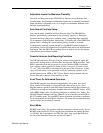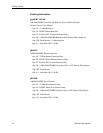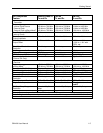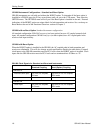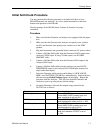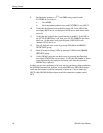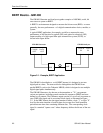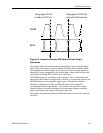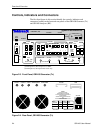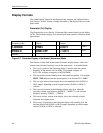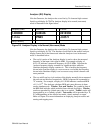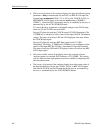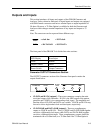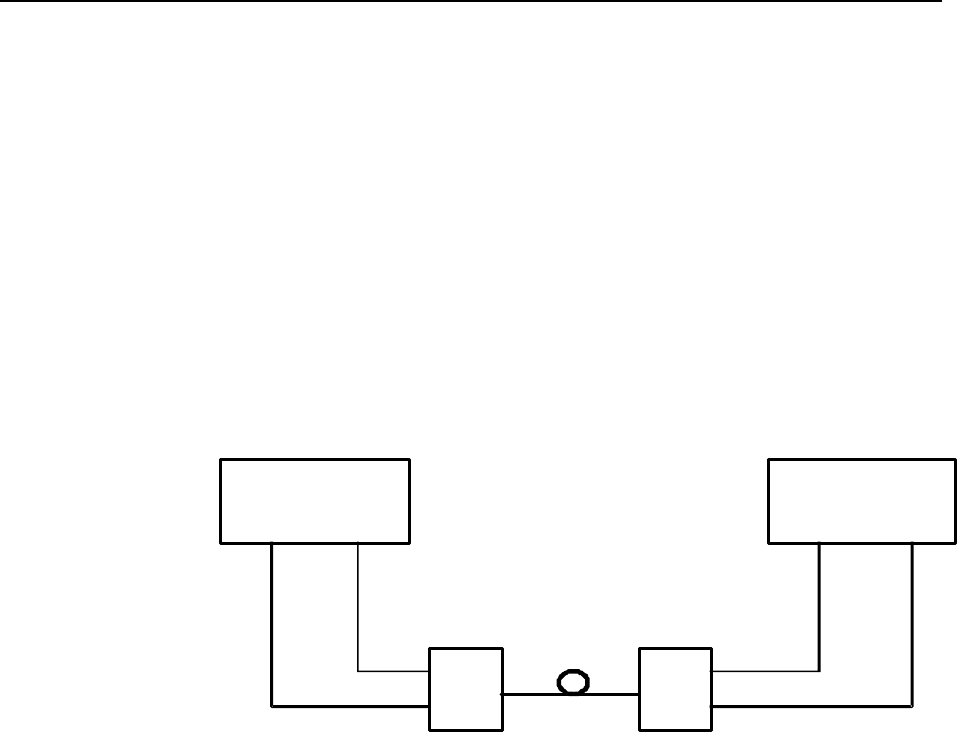
Functional Overview
2-2 GB1400 User Manual
BERT Basics - GB1400
The GB1400 Generator and Analyzer together comprise a 1400 Mb/s, serial, bit
error rate test system or BERT.
A BERT is an instrument designed to measure the bit error rate (BER)—or more
generally, the error performance—of a digital communications device, module, or
system.
A typical BERT application, for example, would be to measure the error
performance of the electrical-to-optical (E/O) and optical-to-electrical (O/E)
output modules of a high-speed fiber optic transmission system (FOTS), as
shown in the figure below.
Figure 2-1. Example, BERT Application
The GB1400 is described as a serial BERT because it is designed to test one
digital path at a time. The term serial also distinguishes the GB1400 from
parallel BERTs, such as the Tektronix MB100, which is designed to test multiple
digital signal paths simultaneously.
The GB1400 Generator, also known as the transmitter or "Tx", can generate
various test patterns, including pseudo-random bit sequences (PRBS) and user-
defined word patterns. The Generator output consists of a two level, non-return to
zero (NRZ) data signal and its associated clock signal, as illustrated in Figure
2-2. In the NRZ format, the data signal remains at either a logic "1" or logic "0"
level for the entire duration of each bit time slot, except for a small transition
period between time slots containing different data. The corresponding clock
signal is a nominal "square wave" whose frequency defines the bit rate of the test
signal.
GB1400 Generator GB1400 Analyzer
CLOCK DATA
OUT OUT
CLOCK DATA
IN IN
E/O
O/E



